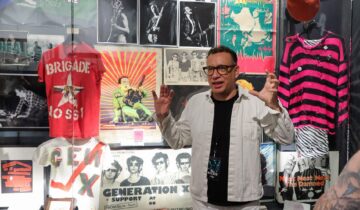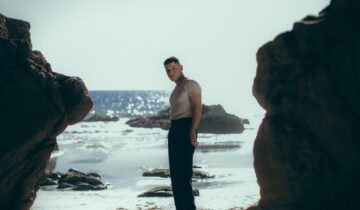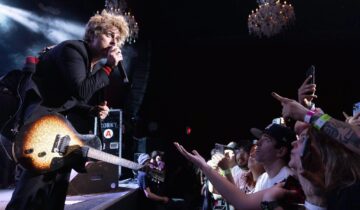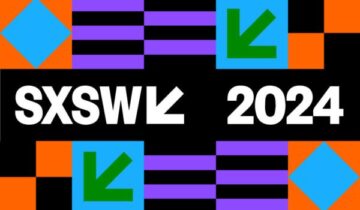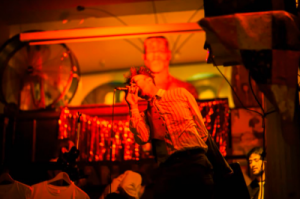 For SF WEEKLY: It’s been more than two years since city officials began offering cheap permits for smaller establishments to host live music, but cafes, restaurants, and outdoor plazas have been slow to take advantage of them — largely because they don’t know the permits exist or simply don’t like paying any extra money to the city. But as more San Francisco music venues close or face uncertain futures due to new ownership, Limited Live Music Permits could help pick up some of the slack.
For SF WEEKLY: It’s been more than two years since city officials began offering cheap permits for smaller establishments to host live music, but cafes, restaurants, and outdoor plazas have been slow to take advantage of them — largely because they don’t know the permits exist or simply don’t like paying any extra money to the city. But as more San Francisco music venues close or face uncertain futures due to new ownership, Limited Live Music Permits could help pick up some of the slack.
Then-Supervisor Ross Mirkarimi created Limited Live Music Permits in summer 2011 through legislation that allows amplified performances until 10 p.m. The new permits cost $405 ($385 initially) and require less red tape than the city’s Place of Entertainment permits, which run about $2,000. Permit applications the first two years generated roughly $17,000, which covers permit processing by the staff, technical assistance, review by the Planning Department and SFPD, and hearings, according to Cammy Blackstone, the Entertainment Commission’s deputy director.
Mirkarimi initially said the permits would create new jobs and generate revenue for the city, but Entertainment Commission officials could not quantify whether either has happened or to what extent, saying the permits were designed to “create more opportunities for musicians to perform, and ostensibly be paid, and provide the ability for venues like restaurants to boost their business with entertainment.”
The city issued 19 limited live music permits in fiscal year 2011-2012 and issued 15 in fiscal year 2012-13. “That’s not good,” says Jocelyn Kane, executive director of San Francisco’s Entertainment Commission, which issues the permits. “Just think about how many premises could have these things, just on Valencia alone.”
Café Divine in North Beach, The Ramp in Dogpatch, the Red Poppy Art House in the Mission, Blush wine bar in the Castro, and Muka wine and dessert lounge in Hayes Valley are some of the venues that have applied for and been granted permits. A $149 annual license fee covers ongoing venue inspections and permit enforcement.
A neighborhood complaint about noise prompted the Red Poppy Art House to apply for a permit. The venue hosts up to 140 live music events each year. “The permit actually helped the situation with our neighbor, as it established that what we were doing was legit, and that we had a clear legal curfew,” founder Todd Brown says. “This helped our neighbor feel clear about what was going on.”
In response to the generally low number of permit applicants, city officials are now working with the Office of Economic and Workforce Development to implement outreach efforts to bring businesses up to speed. A “job squad” is handing out pamphlets to business owners in commercial corridors throughout the city, and explaining how the permit application works.
“Businesses are not a big fan of permits and more money going out to the city,” Kane says. “It’s only been around a few years, so it’s still a baby permit as far as I’m concerned. But there is a gap of information.”
Promoters pushed back against the permits initially because they allowed only for musicians with instruments, not DJs. DJs typically spin much later than 10 p.m. — the permit’s end-time — and when violent acts occur outside music venues, statistically they typically happen at late-night DJ gigs, according to Kane. About a year ago, the city voted to approve DJs as eligible for the new permits.
Several factors related to the permits — earlier curfews, amplification constraints, small venue sizes, and limited interest thus far — may hamper their ability to make a sizable impact on the local music scene.
Their biggest contribution will probably not be to restaurants and wine bars, but rather for small performance spaces like the Red Poppy Art House, which hosts mostly Bay Area artists. Most, if not all, established music venues require guarantees that bands bring a sizable crowd that will generate enough revenue to justify booking the gig in the first place. Gigs at small cafes, restaurants, and public spaces can, in theory, help bands build up that necessary following.
“This was created with a true mission to employ musicians in SF,” Kane says. “There are less and less opportunities for real musicians to get up and play.”
Photo: Fantastic Negrito. Courtesy of Red Poppy Arthouse
